/Milieu biologique/Espèces/Espèces rares, protégées ou en voie de disparition
Type of resources
Available actions
Topics
INSPIRE themes
Keywords
Contact for the resource
Provided by
Years
Formats
Representation types
Update frequencies
status
Scale
Resolution
-
In the Mediterranean deep-sea two scleractinian species, Lophelia pertusa (= Desmophyllum pertusum) and Madrepora oculata, make up the dominant structure-forming corals. The Lacaze-Duthiers canyon is the only French Mediterranean canyon where the two species L. pertusa and M. oculata have been observed living together in large quantities, the situation generally described for the biocoenosis of cold-water corals (CWC). In this canyon large colonies (more than 40 cm) of both species of scleractinians were observed at depths ranging from 246 m to 541 m at the head of the canyon and its western flank. The second canyon is the Cassidaigne canyon, where M. oculata seems to be the only structure-forming scleractinian there. The largest concentration of M. oculata colonies was observed on the west flank of the canyon along a crest at depths ranging from 200 to 210 m. Mature M. oculata colonies attained heights up to 40 cm. M. oculata were observed in three other canyons: Bourcart, Sicié and Var. In the Bourcart canyon, M. oculata was observed on a shelf of hard substratum at 331 m depth. Several single branches protruded from a slab. In the Sicié canyon a 15-cm colony of M. oculata was observed at 255 m depth, while in the Var canyon, three young branches 2 cm long were seen growing at 350 m depth on a wall of hard rock. Data linked to the publication Fabri et al, 2014. https://doi.org/10.1016/j.dsr2.2013.06.016.
-
Distribution des gorgonaires Callogorgia verticillata observées pendant la campagne VIDEOCOR_2017 dans le canyon de Cassidaigne (L'Europe 2017, H-ROV Ariane). Données liées à la publication Fabri et al., 2019. https://doi.org/10.1016/j.pocean.2019.102172
-
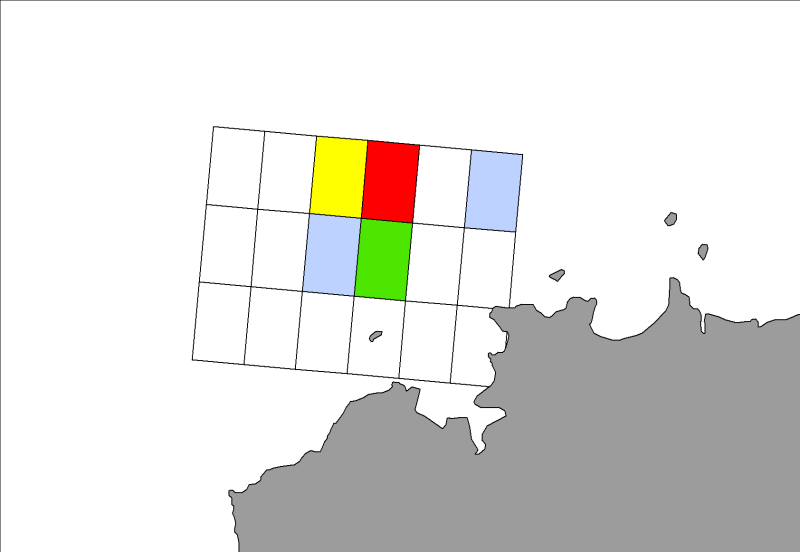
Seasonal spatial distribution of gray seals (Halichoerus grypus) on their haul out sites identified by the ONCFS on the rocks of Portsall in 2010.
-
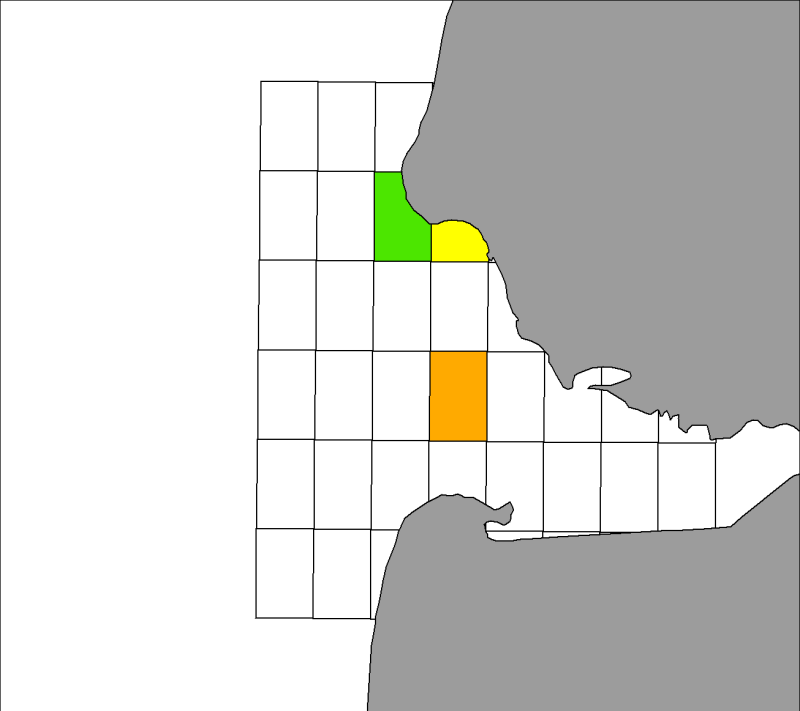
Seasonal spatial distribution of gray seals (Halichoerus grypus) on their haul out sites identified by the associations ADN and Picardy Nature in the Authie Bay from 2007 to 2009 inclusive.
-
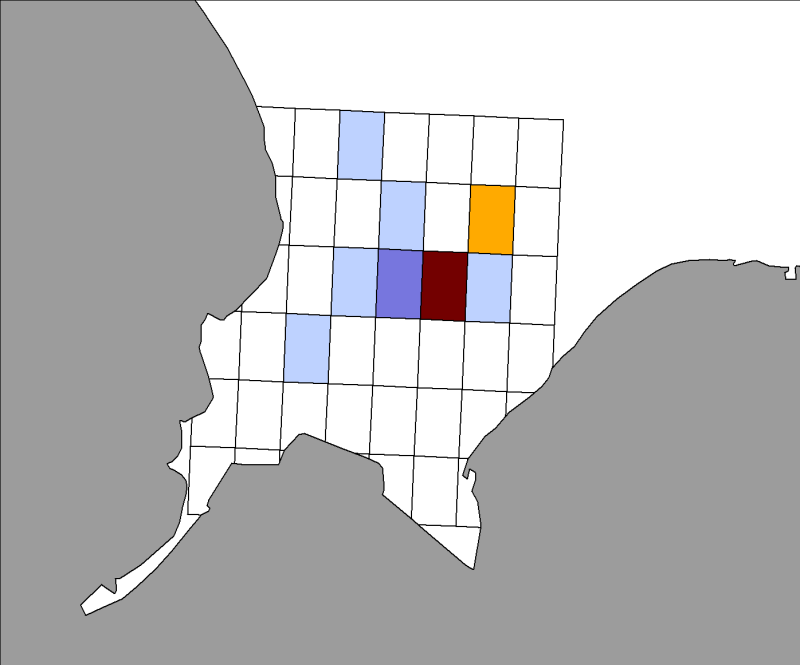
Spatial distribution of quarterly harbor seals (Phoca vitulina) identified by Aérobaie and the Réserve Naturelle du Domaine de Beauguillot (Nature Reserve of Beauguillot) on their haul out sites in the Bay of Somme from 2007 to 2009 inclusive.
-
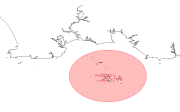
Zone de protection du narcisse de Saint-Nicolas (archipel des Glénan). Cette zone s'étend sur 6 milles autour de l'île de Saint-Nicolas.
-
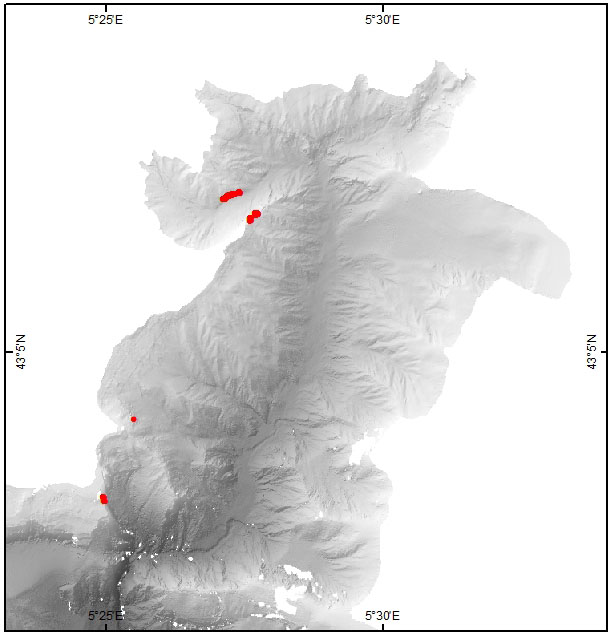
Distribution des coraux d’eaux froides Madrepora oculata (Scleréctiniaires) obtenue pendant la campagne VIDEOCOR1 en 2017 dans le canyon de Cassidaigne, Méditerranée Ouest. Les colonies de coraux ont été filmées/photographiées au cours de la campagne VIDEOCOR1 par le H-ROV Ariane (L’Europe, 2017). Les images ont été utilisées pour réaliser des modèles 3D de chaque zone. Chaque colonie de Madrepora oculata a été positionnée à la main sur les modèles géoréférencés. Données liées à la publication Fabri et al., 2019. https://doi.org/10.1016/j.pocean.2019.102172
-

Distribution connue de corail rouge Corallium rubrum (Alcyonacea) dans le canyon de Cassidaigne, Méditerranée Ouest. Les colonies de corail rouge ont été filmées/photographiées au cours de la campagne VIDEOCOR1 par le H-ROV Ariane (L’Europe, 2017). Les images ont été utilisées pour réaliser des modèles 3D de chaque zone. Chaque colonie de Corallium rubrum a été positionnée à la main sur les modèles géoréférencés. Données liées à la publication Fabri et al., 2019. https://doi.org/10.1016/j.pocean.2019.102172
-
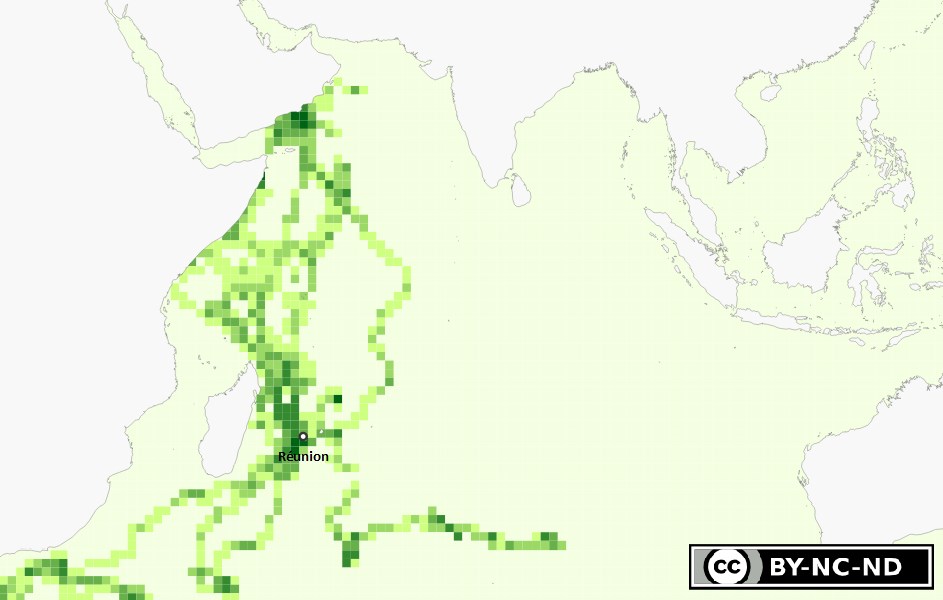
Les données acquises entre 2008 et 2011 par balise Argos, ont été analysées pour sortir 2 localisations par jour. Le nombre de localisations de Tortues Caouannes balisées à La Réunion est agrégé par carré de 1° de côté. Ce mode de calcul est celui choisi dans le cadre du projet Mégafaune pour toutes les populations (une espèce, un lieu) étudiées afin de permettre l'inter-comparaison. Ces tortues juvéniles (<50kg) ont été capturées accidentellement par les pêcheurs autour de l'île. En cas de blessures, elles sont apportées à Kélonia (Observatoire des tortues marines), pour y être soignées puis relâchées au large de La Réunion. Dans le cadre du projet "DYMITILE" et "By Catch Réunion", ces tortues ont été suivies par des balises Argos afin de connaitre l'étendue de leurs déplacements océaniques.
-

Surface connue occupée par les coraux d’eaux froides Madrepora oculata (Scleréctiniaires) dans le canyon de Cassidaigne, Méditerranée Ouest. Les surfaces ont été mesurées d’après les images enregistrées au cours de la campagne VIDEOCOR1 par le H-ROV Ariane (L’Europe, 2017). Les images ont été utilisées pour réaliser des modèles 3D de chaque zone. Chaque colonie de Madrepora oculata a été positionnée à la main sur les modèles géoréférencés. Une couverture en 3-Dimensions a ainsi pu être mesurée. La couverture en 2-Dimensions a été mesurée sur un plan horizontal après transfert des points dans un SIG. La pression anthropique visible est aussi indiquée. Données liées à la publication Fabri et al., 2019. https://doi.org/10.1016/j.pocean.2019.102172
 Mon GéoSource
Mon GéoSource